Are you having difficulties choosing the right foods at the grocery? Do you feel lost when you look at the nutrition fact table? Do you understand the list of ingredients? Finding the right nutritious food and understanding food labels is not as easy task especially with the high number of food products on the market. It’s even harder for people with diabetes because food choices can have an impact on blood sugar level. In this articleI will show all you need to know about grocery shopping in you have diabetes.
UNDERSTANDING SUGAR CLAIMS
Claims are used to attract consumers on a particular nutrition aspect of the food product.
Here is a list of the most common sugar claims and their meaning:
- Free of sugar or sugar free: The food contains less than 0.5g of sugars per portion. For example: chewing gum.
- No sugar added: The food contains no added sugars. However, sugar substitutes (aspartame, sucralose, sugar alcohols, acesulfame-k) could have been added.
- Reduced in sugars: The food is processed, formulated, reformulated or otherwise modified so that it contains at least 25% less sugars than the reference amount of a similar reference food. This label is bit tricky because even if it is reduced it doesn’t necessarily mean that the sugar content is low and that this product is a good choice.
- Fat-free: While it’s not a sugar claim, it’s important to know that some fat-free foods are often higher in sugar than the regular version.
Beware this claim does not mean that there are no sugars in this product! This is why it is very important to look at the food label to check the content of carbohydrate and sugars. For example, if you are buying an applesauce with no sugar added, you are still getting the natural sugar from the apples but no extra sugar has been added.
CHECKING THE INGREDIENT LIST
The ingredient list shows all the ingredients in a packaged food product. They are usually listed in descending order by weight, beginning with the ingredient that weights the most and ending with the ingredient that weights the least. Therefore, if you see the word sugar or sugar derivatives in the first FIVE ingredients, it would be wise to check the sugar content on the nutrition fact label. The list of ingredients can also be a good place to look for heart-healthy ingredients such as healthy fats; or whole grains.
It’s important to know that there are different names of sugar. Look for words that end in -OSE. These include: sucrose, maltose, dextrose, fructose, glucose, galactose, lactose, high fructose corn syrup.
Unfortunately, it doesn’t end here. The following are all sugar: cane juice, dehydrated cane juice, maltodextrin, corn syrup, caramel, brown sugar, malt syrup, agave syrup, fruit juice concentrate, maple syrup, honey and molasses.
USING THE NUTRITION FACT TABLE
A lot of people tend to focus on the number of calories in a product. While it is important. It’s not only the calories that count. Here are some quick tips when reading the nutrition fact table:
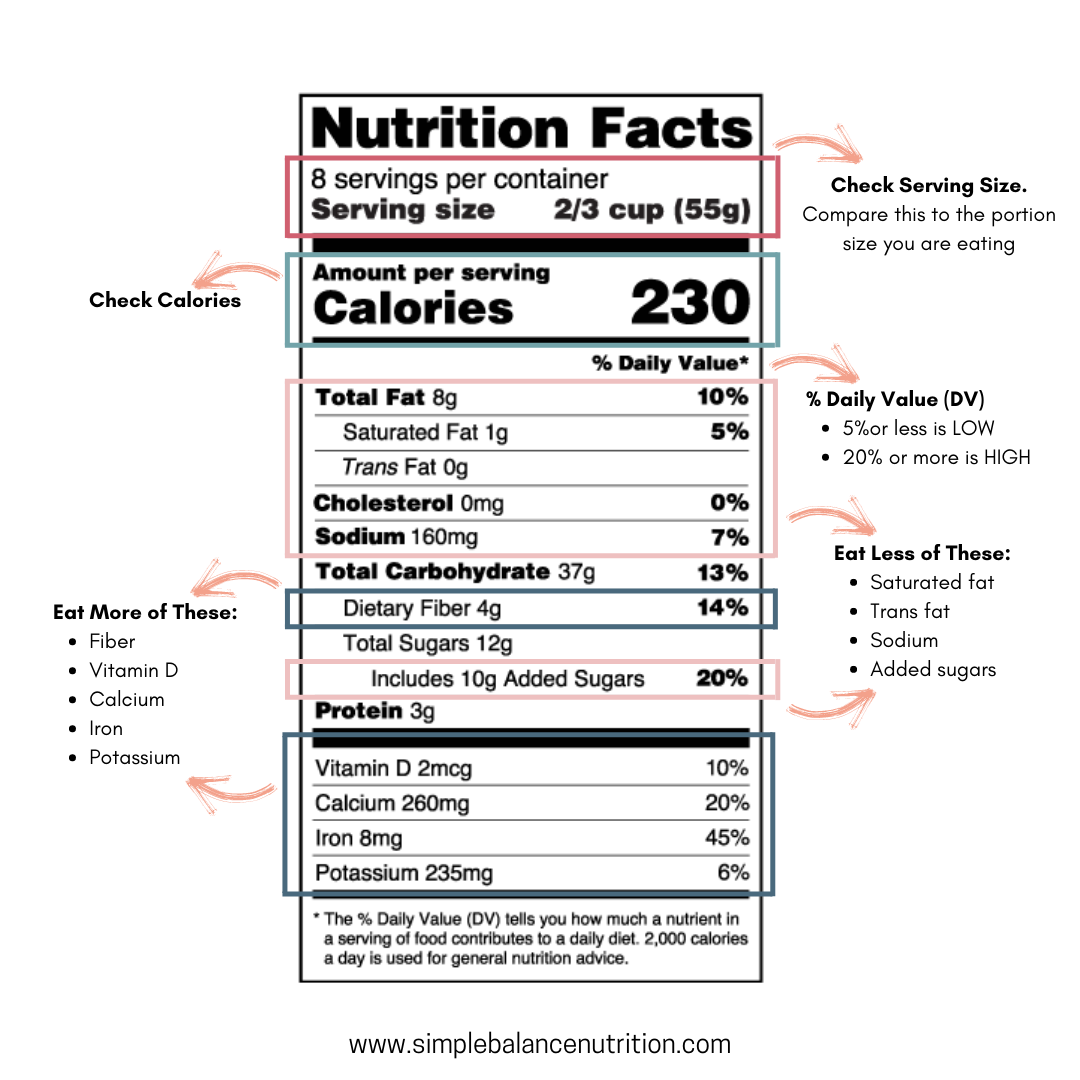
START BY CHECKING THE PORTION OF REFERENCE
All values in the Nutrition Facts table represent a specific amount of food. Be sure to compare this amount with the amount that you are actually consuming.
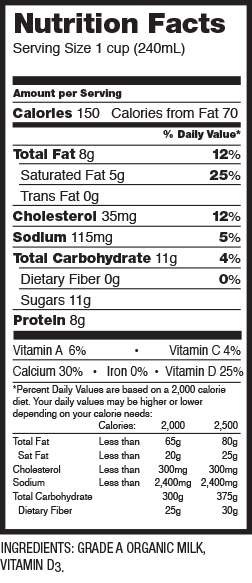
For example: If a 240 ml milk brings you about 11g of carbohydrates, evaluate if your intake corresponds to that same quantity or more and this by checking the amount you usually drink.

CHECK THE % DAILY VALUE
Fiber
They are found in the right column on the label and can help you make informed food choice. A useful tip is to look at the % daily value of fiber in the chosen product. Fibers play a role in regulating blood sugar levels. Therefore, the more fiber you have in a product the better. As easy way to verify that is to look at the percentage. If a particular food product has 5% or less fiber per portion, it means that the fiber content in this product is low. On the other hand, a percentage equal or superior to 15% means that this product is high in fiber.
Saturated, Trans fats and sodium
Since people with diabetes are at risk of having cardiovascular diseases, it would benefit to check also the percentage value of the saturated and Trans fats (bad fats) and sodium. In this content, aiming for 5% or less is ideal.
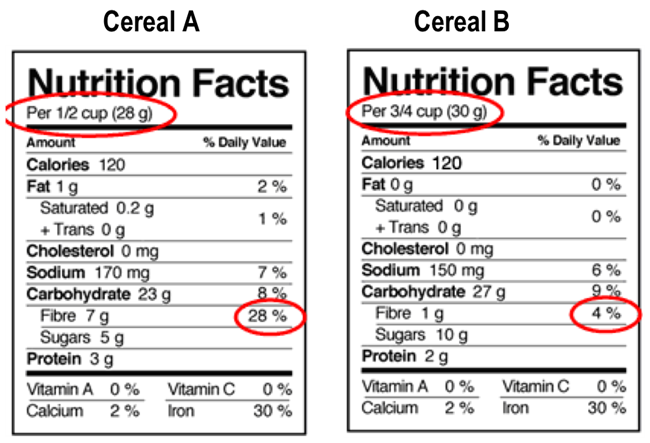
Finally, if you feel hesitant between similar products, use the % daily value to compare and pick the best option. However, make sure they both have the same portion of reference.
LOOK FOR THE FIBER CONTENT AND SUBTRACT IT FROM THE TOTAL OF CARBOHYDRATES
Diabetes is all about blood sugar control and one way to do that is to know approximately the amount of sugar a product is giving you per portion. This is especially true for those with type 1 diabetes and who have uncontrolled type 2 diabetes. Fiber is highly encouraged int he diet because it’s not digested and therefore it will not affect blood sugar levels. In fact, some types of fibers such as soluble fiber found in oat bran, legumes (beans, peas, and lentils), and fruits high in pectin can actually help control blood sugar levels.
Here is an example of a nutrition label and how we can deduct fiber from the total carbohydrate amount:
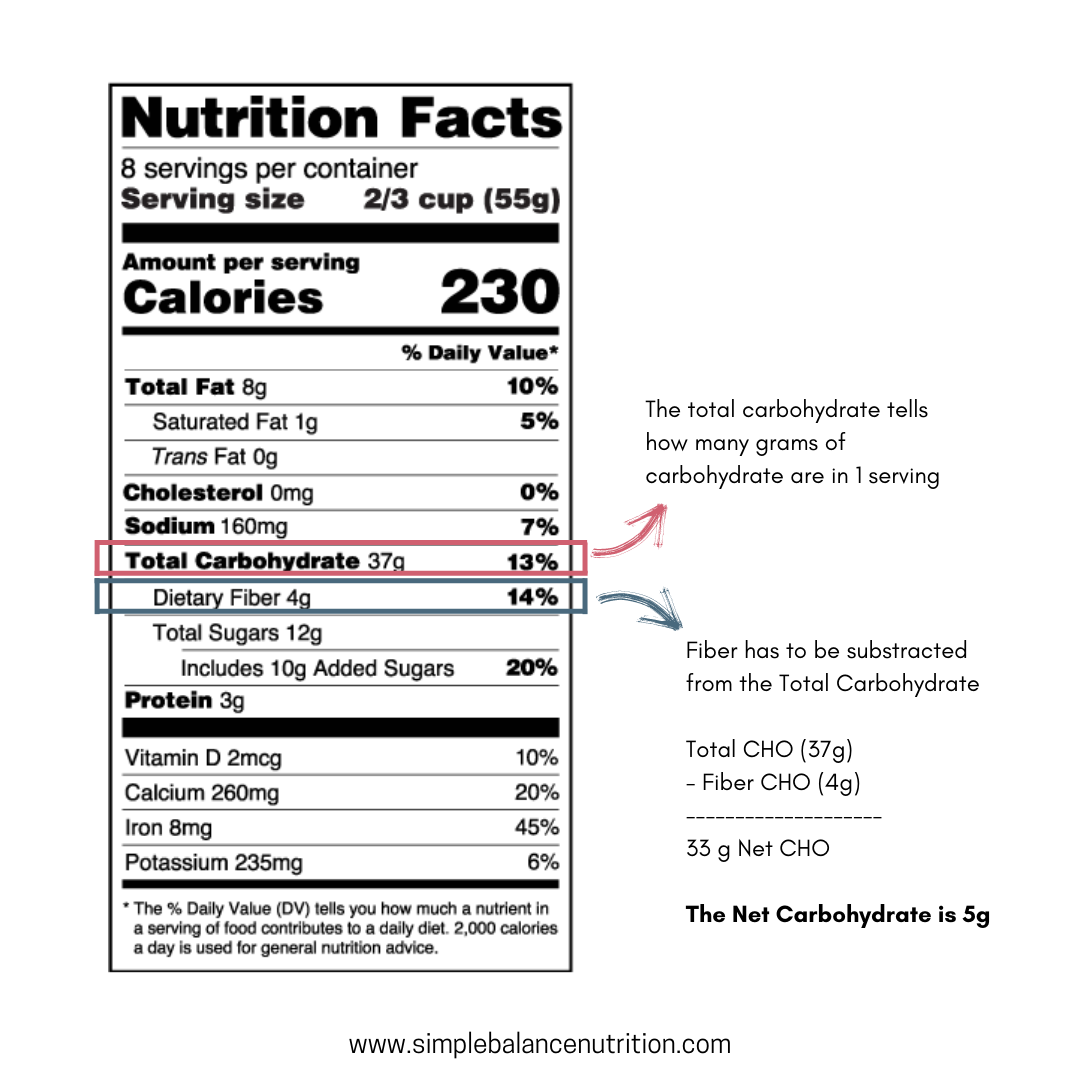
As we can read from the label, this product has 10 grams of carbohydrates in one cup. From these 10 grams, 5 grams are dietary fiber. Therefore, the total amount of carbohydrate to be considered is 5g.
BOTTOM LINE
Understanding nutrition labels will make your grocery shopping experience way easier as you will be making more informed food choices. Here is a list of some grocery shopping tips:
- Don’t go on an empty stomach and check your blood sugar levels before you go.
- Focus on fresh fruits and vegetables of all colours. Frozen versions are also good but avoid buying sweetened frozen fruits.
- Try to choose more complex carbohydrates such whole grain products. Aim for 2 grams of more of fiber per portion.
- If you want to buy biscuits/crackers look for those that have less than 20 grams of carbohydrates per portion and less than 5 g of fat.
- Explore non-animal sources of proteins such as beans and lentils least once a week. They not only contain protein but they are excellent sources of fibers.
- Go more for lean proteins, fish high in omega-3 and egg whites.
- Aim for unflavoured dairy products. Flavored versions tend to be higher in sugar.
- Pick low sodium or no salt-added products.

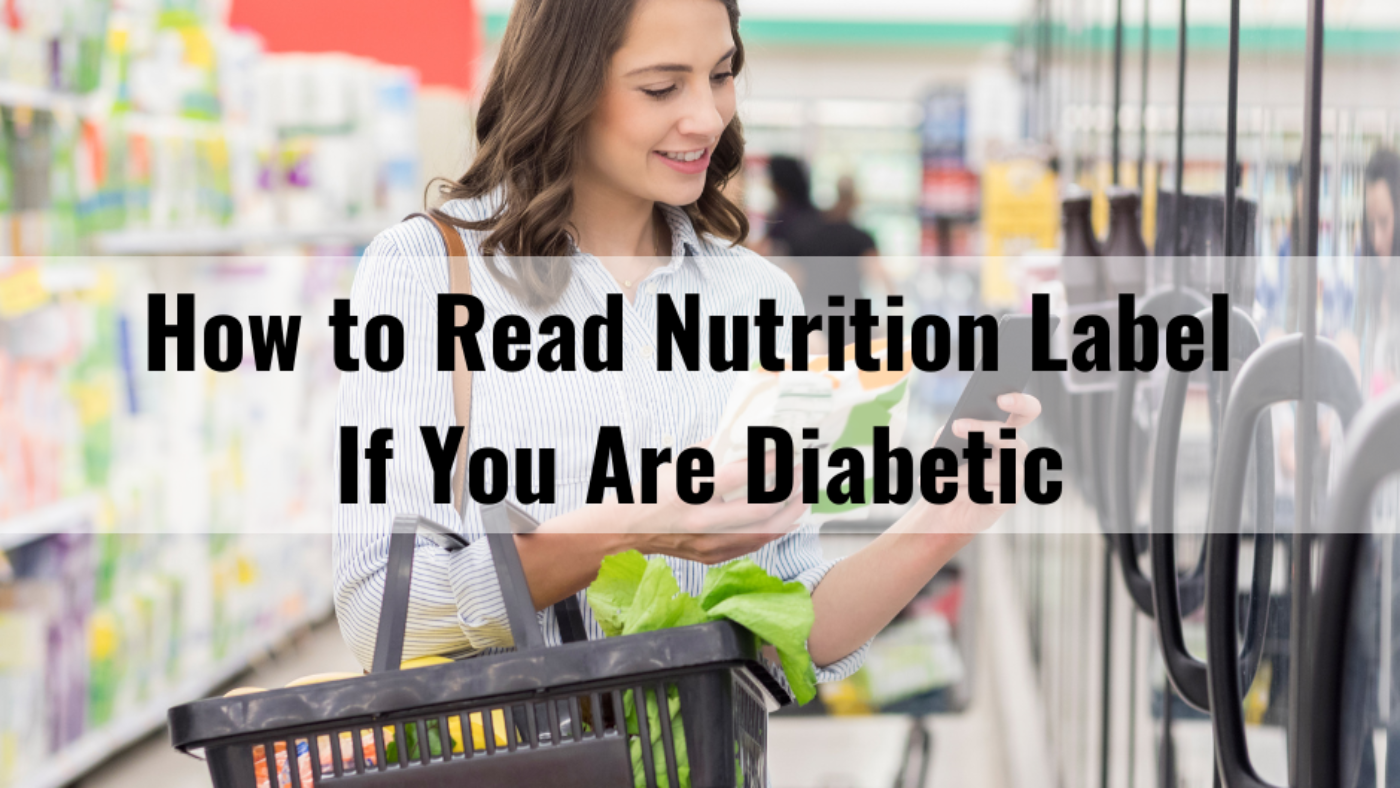
Leave A Comment